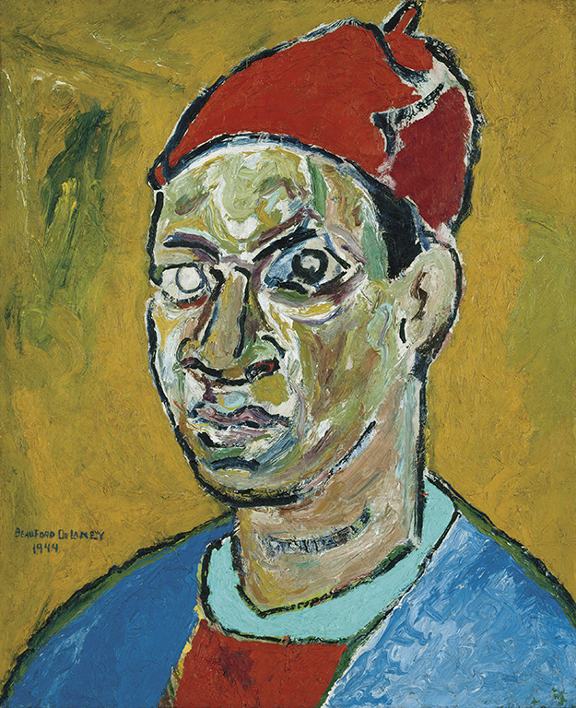Black History Month: Beauford Delaney
My Black History Month series continues this week with the artwork of Beauford Delaney. Delaney was one of the few African American artists of his Harlem Renaissance generation who primarily pursued abstraction.
 |
| Beauford Delaney (1901–1979, U.S.), Self-Portrait, 1944. Oil on canvas, 27" x 22 ½" (68.6 x 57.2 cm). Courtesy of the Art Institute of Chicago. © 2024 Artist or Estate of Artist. (AIC-284) |
In addition to his abstract works, Delaney is celebrated for portraits created earlier in his career. The figures depicted are elevated by the expressionistic surface, the artist's true emphasis. For Delaney, subject matter—even a self-portrait—was a means for painting an expressionistic affirmation of life.
Delaney's interest in abstraction led him to Paris in 1953. There, he was attracted to the many different forms of nonobjective abstraction. His later paintings were totally nonobjective. Delaney remained in Paris the rest of his life.
During the Great Migration (ca. 1910–1970), many African Americans from the rural South moved to Northern, Midwestern, and Western cities. Greater job opportunities led some African Americans to feel optimistic about participating more fully in American life. In the 1920s, vibrant Black communities began to form in these cities, including the Harlem neighborhood of New York City. Many artists of the Harlem Renaissance had been born in the South.
In Harlem, many older Black artists mentored younger artists. During the 1920s and 1930s, exhibits exclusively featuring Black artists were organized. As African Americans explored ancestry, history, and achievements of African civilizations, African art and imagery became a major influence in the work of many Black artists.
The Harmon Foundation, a philanthropic organization in New York, sponsored yearly exhibits in Harlem during the 1920s and 1930s. Publications of the NAACP and Urban League featured the work of Black artists. Reviews of exhibits of African American art in leading magazines such as Life exposed many white Americans to Black art for the first time.
Delaney was born in Knoxville, Tennessee, in 1901. He and his younger brother, Joseph (1904–1991), were both attracted to art at an early age. As children, they drew, modeled clay, and copied pictures. Delaney’s earliest painting was a portrait of his high school principal, Charles Cansler. He apprenticed with Knoxville-based American Impressionist artist, Lloyd Branson (1853–1925), in his early 20s. Delaney ultimately migrated to Boston to study art.
Studying at the Massachusetts Normal School and Copley Society, Delaney learned the basics of painting in the academic tradition. While in Boston, Delaney became acquainted with sophisticated political thinking around racial equality and opportunity. In 1929, Delaney moved to Harlem.
In New York, Delaney studied at the Art Students League under Ash Can School artist John Sloan (1871–1951). Sloan was painting in an expressionistic manner with an Impressionist palette at that time. From Sloan, Delaney adapted fluid brushwork and bright color. He also became interested in depicting life on the street, particularly of African Americans. Delaney exhibited at the Harmon Foundation, winning a prize in 1933.
Unlike many of his contemporaries, Delaney did not engage in the debate about the aims of African American art. By the end of the 1930s, he developed a rapport with the artists of the nascent Abstract Expressionist movement. Delaney chose to paint in an abstract style, maintaining a positive attitude about his artistic experiences despite struggling to find success with his avant-garde style.
Correlations to Davis programs: Explorations in Art 2E Grade 1: 2.1; Explorations in Art 2E Grade 2: 2.3; Explorations in Art 2E Grade 3: 1.1; Explorations in Art 2E Grade 6: 1.9; Experience Art: 1.1


Comments